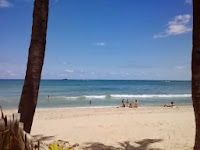 |
| Early Miami Florida State Archives |
Miamians were excited about their new town in 1897. Henry Flagler’s East Coast Railroad was extended from Palm Beach to the Biscayne Bay area in April the prior year. In July 1896 Miami (named for a nearby river) was incorporated. The new Flagler hotel, the “mammoth” Royal Palm, was open for business. Miami’s population ballooned from 300 before the railroad to more than 1,600 residents in 1897. The fledgling city was poised for continued growth.
Its newspaper, the Miami Metropolis, publicized reasons to move to the area in its June 4, 1897 edition. Among them were:
- A “good back country which is being settled up very rapidly. The local trade from this territory and that which comes from the Florida Keys will support a good town at this point.”
- The Royal Palm Hotel, plus “three other good hotels.”
- The large holdings of Flagler and the amount of money he has already expended in the development of Miami will ensure the growth of manufacturing in the area.
- Miami is warm enough to warrant the planting of citrus trees.
- “Our transportation facilities are excellent.” (In addition to the rail terminus, Flagler also established boat service to the Bahamas.)
- Three secret societies
- A sound bank
- An ice factory
- “Ten brick buildings, one, the Hotel Biscayne with four stores underneath.”
- "Several miles of paved streets"
- “Waterworks and a sewerage system”
As it turned out, "Marvelous Miami" did not need a grand public relations plan to launch its growth. South Florida with its prospects for a new life—and perhaps riches—quickly attracted pioneers from around the country looking for a new frontier. By 1910 there were nearly 5,500 in Miami, by 1920, more than 29,000.
Sources:
Miami Metropolis, June 4, 1897
www.historymiami.org
Tags: Miami history, Miami before 1900, Henry Flagler, Royal Palm, film researcher, historical researcher, Fort Lauderdale historian, Miami historian




